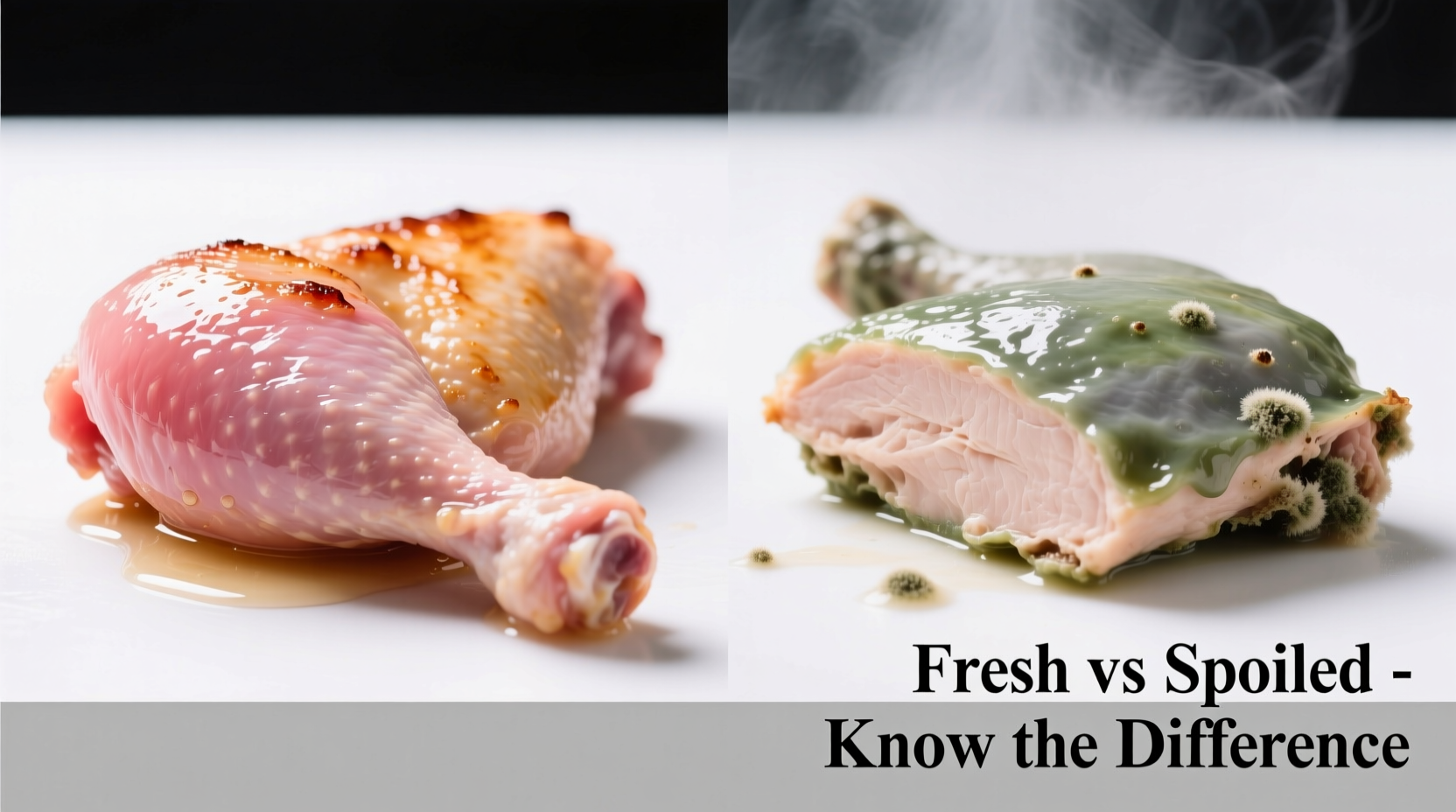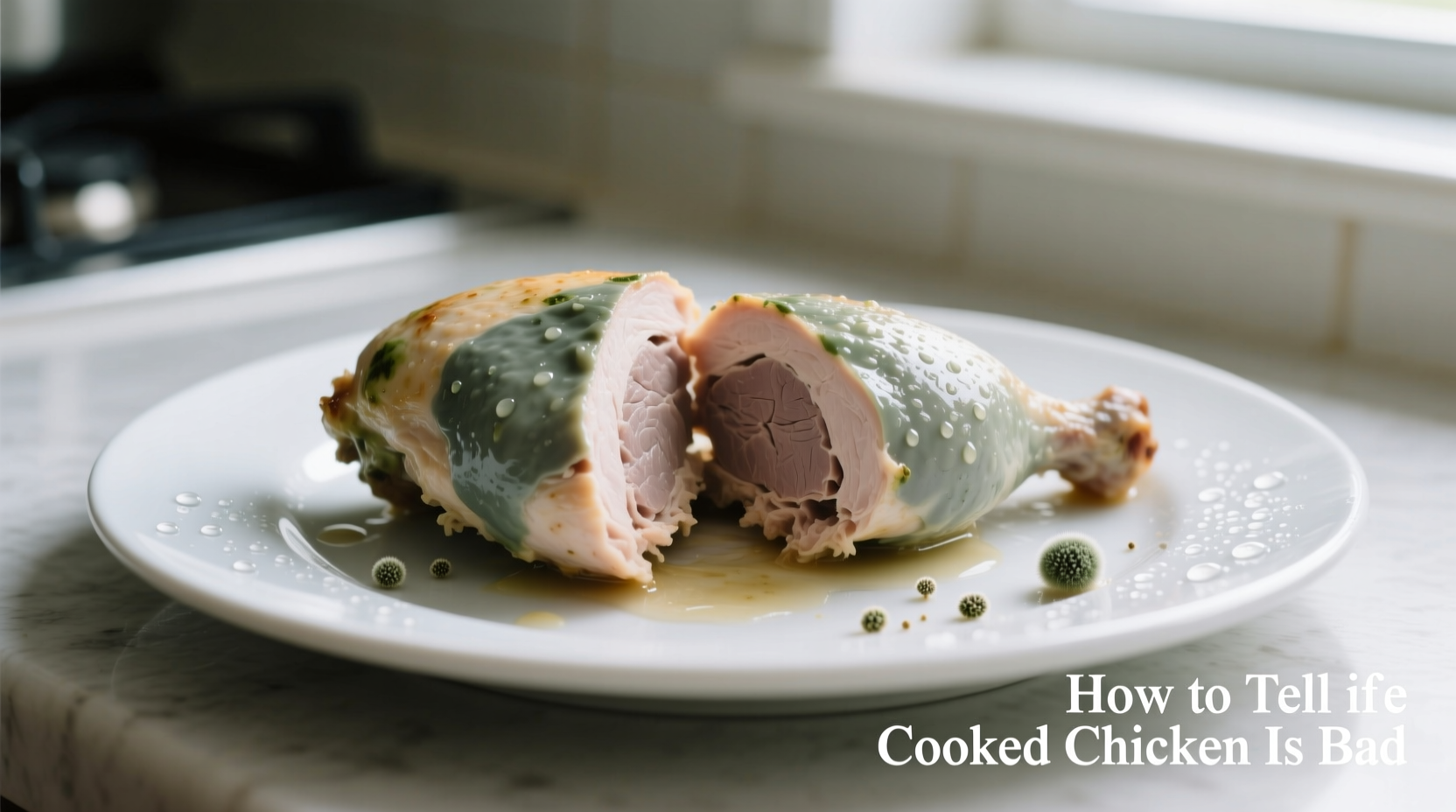Spot Spoiled Chicken Before It Spoils Your Health
Every year, millions suffer from foodborne illnesses caused by improperly handled poultry. Knowing exactly how to tell if cooked chicken is bad isn't just convenient—it's essential for protecting your family's health. This guide delivers actionable checks you can perform in under 30 seconds using your senses, plus science-backed storage guidelines from food safety experts.Your First Line of Defense: Visual Inspection
When evaluating cooked chicken, your eyes provide the first critical clues. Fresh, properly stored cooked chicken maintains its original color—typically white or light brown depending on cooking method. As spoilage begins, watch for these visual red flags:- Color deterioration: Grayish, greenish, or dull yellow hues indicate bacterial growth
- Surface moisture: Excessive liquid pooling around the chicken
- Mold development: Fuzzy spots in white, green, or black
- Shrinkage: Significant texture changes where meat appears dried out
| Safe Cooked Chicken | Spoiled Cooked Chicken |
|---|---|
| Consistent color (white/brown) | Grayish-green discoloration |
| Minimal surface moisture | Pools of cloudy liquid |
| Firm, springy texture | Slippery or sticky surface |
| Clean meat aroma | Sour or ammonia-like smell |

The Smell Test: What Your Nose Reveals
Your sense of smell provides the most reliable indicator of spoilage. Fresh cooked chicken has a neutral, mild aroma. When bacteria multiply to dangerous levels, they produce volatile compounds that create distinct odors:- Sour smell: Similar to spoiled milk or yogurt
- Sulfur odor: Resembling rotten eggs
- Ammonia scent: Sharp, chemical-like smell
- Putrid aroma: General foul or "off" smell
Texture Tells the Truth
Spoiled chicken undergoes physical changes you can feel. Properly stored cooked chicken should feel firm yet tender. As spoilage progresses, you'll notice:- Slippery film: A slimy coating that feels like plastic wrap
- Sticky surface: Residue that clings to your fingers
- Mushy consistency: Loss of structural integrity
Time and Temperature Guidelines You Must Follow
The USDA Food Safety and Inspection Service provides clear timelines for cooked chicken safety:- Room temperature: Discard after 2 hours (1 hour if above 90°F/32°C)
- Refrigerator (40°F or below): Safe for 3-4 days maximum
- Freezer (0°F): Maintains safety indefinitely, though quality declines after 4 months
Cooked Chicken Spoilage Timeline
- 0-2 hours at room temperature: Safe for consumption
- 2-4 hours: Bacteria begin multiplying rapidly
- 4+ hours: High risk of foodborne illness
- Day 1-2 refrigerated: Peak quality and safety
- Day 3-4: Approaching spoilage threshold
- Day 5+: High spoilage risk even if no visible signs
Special Considerations for Vulnerable Groups
Certain situations require extra caution beyond standard guidelines. The CDC recommends stricter protocols for:- Households with infants, elderly, or immunocompromised individuals
- Leftovers from buffets or potlucks with unknown temperature history
- Chicken cooked in advance for meal prep exceeding 3 days
- Any chicken exposed to power outages affecting refrigerator temperature
When in Doubt, Throw It Out
No amount of reheating can eliminate toxins produced by certain bacteria like Staphylococcus aureus. If you detect even one spoilage indicator, discard the chicken immediately. The USDA emphasizes that "mold on cooked poultry can indicate deeper contamination even when not visible."Prevent Spoilage Before It Starts
Follow these professional kitchen practices to maximize cooked chicken safety:- Cool leftovers rapidly by dividing into shallow containers
- Store in airtight containers within 2 hours of cooking
- Label containers with cooking date using permanent marker
- Keep refrigerator temperature at 40°F (4°C) or below
- Thaw frozen chicken in refrigerator, not on counter
Frequently Asked Questions
Can I eat cooked chicken after 5 days in the refrigerator?
No. The USDA Food Safety and Inspection Service recommends discarding cooked chicken after 3-4 days in the refrigerator, even if it shows no visible spoilage signs. Bacterial growth may occur without obvious indicators.
Does reheating spoiled chicken make it safe to eat?
No. Reheating cannot destroy certain heat-stable toxins produced by bacteria like Staphylococcus aureus. If chicken shows any spoilage signs, reheating won't make it safe for consumption.
Why does my cooked chicken smell fine but feel slimy?
Texture changes often precede odor changes in spoilage. A slimy film indicates significant bacterial growth even when smell seems normal. Discard immediately as it's no longer safe to eat.
How long can cooked chicken stay safe in a lunchbox?
Cooked chicken remains safe for 2 hours in a lunchbox at room temperature. Use an insulated container with ice packs to maintain temperatures below 40°F, extending safety to 4-6 hours maximum.











 浙公网安备
33010002000092号
浙公网安备
33010002000092号 浙B2-20120091-4
浙B2-20120091-4